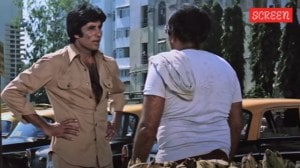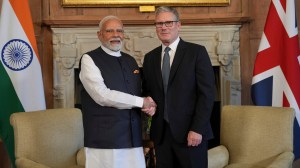Uber Shuttle bus service in Bengaluru’s IT corridor soon: India head
Uber Shuttle bus service has already been launched in Delhi NCR, Kolkata, Hyderabad and Mumbai.
 With the Karnataka transport department and aggregator apps facing off on legal battle over aggregator rules and pricing mechanisms, Singh requested the government to allow and cap dynamic pricing. (Express Photo)
With the Karnataka transport department and aggregator apps facing off on legal battle over aggregator rules and pricing mechanisms, Singh requested the government to allow and cap dynamic pricing. (Express Photo)In a bid to offer low-cost mobility solutions for commuters who are stuck for long hours in busy Bengaluru roads, Uber has announced plans to start affordable bus services to work places in the city.
Uber Shuttle bus service is initially expected to kickstart along the 18-km IT corridor connecting KR Puram and Silk Board, said Prabhjeet Singh, president of Uber India and South Asia, on Wednesday.
The corridor is home to nearly 30 tech parks and around 15 lakh IT employees.
During the launch of Uber’s 2024 India Economic Impact Report, he said that talks are on with the regulators in Bengaluru to kickstart the project.
Uber Shuttle bus service has already been launched in Delhi NCR, Kolkata, Hyderabad and Mumbai.
“We are in active dialogue with different stakeholders. We need to get a go ahead and launch the service. Uber Shuttle is the most efficient, affordable and it complements public transport,” Singh said.
He mentioned that once they get the “green light” Uber would run around 200 shuttles along the Outer Ring Road (ORR) on the IT corridor with air-conditioned buses that are pre booked.
“We could do service every two-three minutes. There are use cases which could coexist with alternative public transportation options which are there in the city. I think I’m hoping that policy makers are far more open to innovation. If not now, I am optimistic about this service kicking off in a year or two,” he said.
On high commission and overpricing
Responding to criticisms of overpricing and high commission charges levied on Uber drivers, Singh said that during peak hours, if there is an undersupply, prices fluctuate. “The only way to bring prices down structurally is to increase the number of vehicles and reduce vehicle costs. Electrification will help reduce costs in the long term, but adding more vehicles is the immediate opportunity,” he said.
He said the central government’s guidelines provide a clear guardrail and demanded the need for flexibility in pricing. “If someone is willing to pay ₹950 instead of ₹800 during peak hours, they should be able to get a car. However, the price shouldn’t go beyond certain limits, like ₹1,400. There should also be a lower limit during times of oversupply. A flexible pricing model adjusts with supply and demand, but intervening with artificial caps disrupts the marketplace,” Singh explained.
Uber’s submissions to Karnataka’s transport department
With the Karnataka transport department and aggregator apps facing off on legal battle over aggregator rules and pricing mechanisms, Singh requested the government to allow and cap dynamic pricing.
“First, allow dynamic rider pricing within a cap and a floor. Second, don’t define subcomponents like time and kilometer-based charges, as we need flexibility to compensate drivers for time spent in traffic. Third, allow flexibility. Set an upper limit, but let us adjust based on different trips. For example, some trips might have a 1% commission, others may have up to 25-27%, depending on trip length and demand. Both drivers and riders are comfortable with this flexibility,” he suggested.
He said that Uber provides transparency to drivers in the app, showing their average service fee for the previous week. “Most drivers will see that it’s likely below 12%. We don’t manually adjust it; it’s system-generated. So instead of having strict regulations, it’s important to allow the system to work naturally within a broad regulatory framework,” he added.
One in every four bike taxi rides are to Metro: Report
Uber’s India Economic Impact Report highlighted that in 2024, the driver-partners earn an additional 60 per cent a year in higher income through Uber, relative to their next best alternative type of work.
It also stated that Uber Auto and Moto are expected to drive Rs 36,000 crores in economic activity in 2024. Singh pointed out that one in every four bike-taxi rides are to Metro sations, bridging the last mile connectivity.












